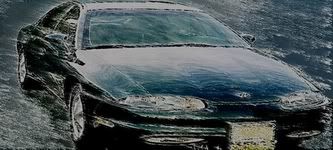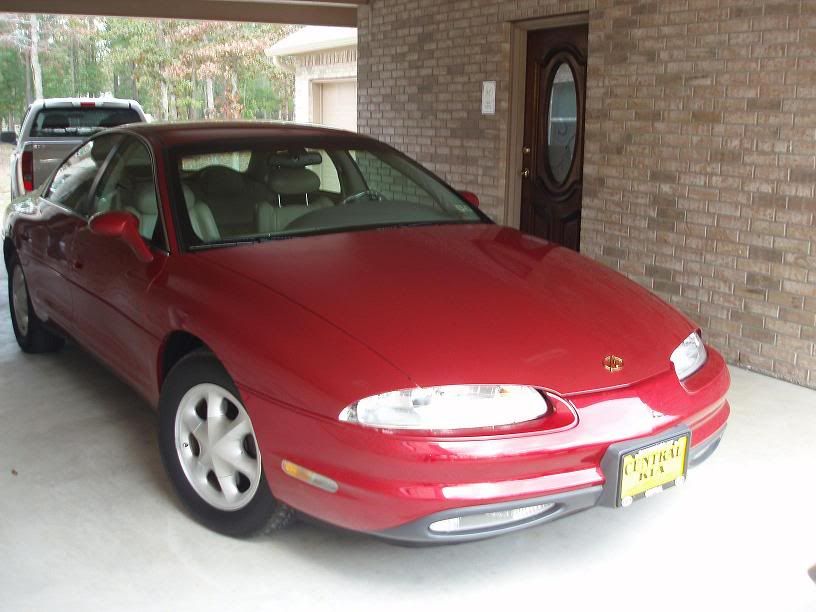Post by Aurora40 on Apr 2, 2005 12:19:12 GMT -6
There are many ways to do this. I will outline two ways.
The first way is for a very dirty engine bay, and the end result is one that looks much cleaner, but is not showroom. The second way is more laborious and is really meant more for cleaner engines. How clean you make it is up to you. The first method is also useful to get a very dirty engine into a state where you can more easily do the second method.
So here we go. If your engine bay is quite dirty, here is what I suggest. Make sure the engine is cool. I will typically drive the car around the block once or twice to get it slightly warm, then let it sit to cool the exhaust. I tend to use hot water, so I prefer the engine to be somewhat warm, but definitely not hot. Anyway, with cold water a cold engine is probably better, and certainly safer. Warm just helps break up some of the gunk better.
I do not cover engine components, however this is up to you. I do take care not to hose down things like the alternator or coil packs, distributors, and so on. You can certainly cover things if you'd like. Plastic bags, plastic wrap, and aluminum foil all work well for this. I use a garden hose, not a pressure washer. A pressure washer will be more likely to push water into things it shouldn't be in, though they can certainly be used (carefully).
First, I'll usually go around and pick out and large junk like leaves and twigs that are accumulated in the engine. Hosing these around will probably just result in them getting stuck further down in the engine bay. Then I hose it down. I start with the underside of the hood and the hood blanket, because it will just end up dripping all over the engine and engine bay. Then I hose down the bay.
Then I will get my cleaner of choice. I use Meguiar's All Purpose Cleaner Plus for this at a 4:1 dilution. I will suggest you use a cleaner that will not corrode or stain metals and plastics. It's almost a certainty that some cleaner will be pooled hiding somewhere in your engine. You don't want it sitting there eating away at stuff.
I do the underside of the hood first. I spray it down liberally with my cleaner. Then I take a soft-bristled brush (I use long-handled brushes that are meant for washing vehicles, so they have soft bristles) and scrub it gently around. Then I do the same to the engine bay. Then I rinse the hood and then the engine bay.
At this point, things should look much better. However, there are bound to be areas that are still gunky, so we'll want to focus our cleaner there and let it work for a bit. Then scrub them and rinse again until it is clean to your satisfaction.
Now, you have a pretty clean, but very wet engine. At this point, I will close the hood, start the car up, and drive around the block making lots of swerves and hard stops, etc, in an effort to splash out any pooled water. The goal is to get water to run out, not to get the engine hot to steam it out. Hot = bad because there is still pooled water splashing around. Then I will return home, pop the hood, and let it dry.
At this point you are done, though I will actually apply a finishing product to the engine bay. I use a product called Meguiar's Engine Kote, that they unfortunately don't make anymore (no one bought it). It can be sprayed on the wet engine and left to dry. It dries to a clear, hard shell that looks nice and keeps things clean longer. I also use this in wheel wells to great effect.
Here is a before and after of an engine I cleaned in this manner.
Before:

After:

And the after of another engine. I don't have a before shot, but it was much grimier than the Bonnie before shot (more greasy sticky dirt instead of the dusty dirt):

The first way is for a very dirty engine bay, and the end result is one that looks much cleaner, but is not showroom. The second way is more laborious and is really meant more for cleaner engines. How clean you make it is up to you. The first method is also useful to get a very dirty engine into a state where you can more easily do the second method.
So here we go. If your engine bay is quite dirty, here is what I suggest. Make sure the engine is cool. I will typically drive the car around the block once or twice to get it slightly warm, then let it sit to cool the exhaust. I tend to use hot water, so I prefer the engine to be somewhat warm, but definitely not hot. Anyway, with cold water a cold engine is probably better, and certainly safer. Warm just helps break up some of the gunk better.
I do not cover engine components, however this is up to you. I do take care not to hose down things like the alternator or coil packs, distributors, and so on. You can certainly cover things if you'd like. Plastic bags, plastic wrap, and aluminum foil all work well for this. I use a garden hose, not a pressure washer. A pressure washer will be more likely to push water into things it shouldn't be in, though they can certainly be used (carefully).
First, I'll usually go around and pick out and large junk like leaves and twigs that are accumulated in the engine. Hosing these around will probably just result in them getting stuck further down in the engine bay. Then I hose it down. I start with the underside of the hood and the hood blanket, because it will just end up dripping all over the engine and engine bay. Then I hose down the bay.
Then I will get my cleaner of choice. I use Meguiar's All Purpose Cleaner Plus for this at a 4:1 dilution. I will suggest you use a cleaner that will not corrode or stain metals and plastics. It's almost a certainty that some cleaner will be pooled hiding somewhere in your engine. You don't want it sitting there eating away at stuff.
I do the underside of the hood first. I spray it down liberally with my cleaner. Then I take a soft-bristled brush (I use long-handled brushes that are meant for washing vehicles, so they have soft bristles) and scrub it gently around. Then I do the same to the engine bay. Then I rinse the hood and then the engine bay.
At this point, things should look much better. However, there are bound to be areas that are still gunky, so we'll want to focus our cleaner there and let it work for a bit. Then scrub them and rinse again until it is clean to your satisfaction.
Now, you have a pretty clean, but very wet engine. At this point, I will close the hood, start the car up, and drive around the block making lots of swerves and hard stops, etc, in an effort to splash out any pooled water. The goal is to get water to run out, not to get the engine hot to steam it out. Hot = bad because there is still pooled water splashing around. Then I will return home, pop the hood, and let it dry.
At this point you are done, though I will actually apply a finishing product to the engine bay. I use a product called Meguiar's Engine Kote, that they unfortunately don't make anymore (no one bought it). It can be sprayed on the wet engine and left to dry. It dries to a clear, hard shell that looks nice and keeps things clean longer. I also use this in wheel wells to great effect.
Here is a before and after of an engine I cleaned in this manner.
Before:

After:

And the after of another engine. I don't have a before shot, but it was much grimier than the Bonnie before shot (more greasy sticky dirt instead of the dusty dirt):




















